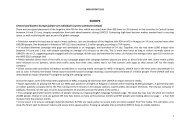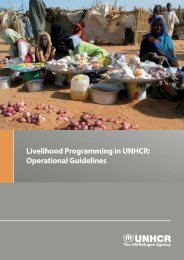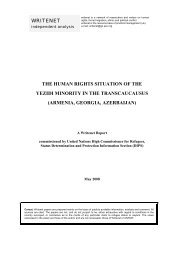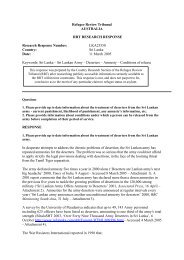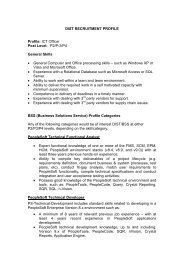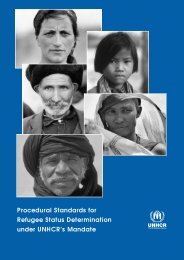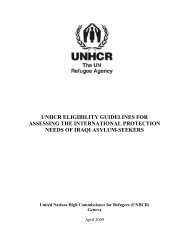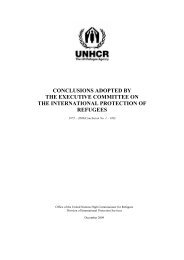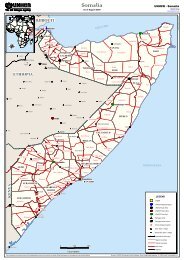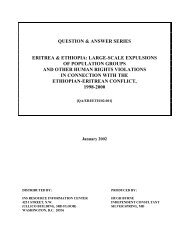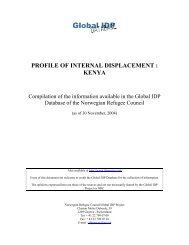UNHCR's ELIGIBILITY GUIDELINES FOR ASSESSING THE ...
UNHCR's ELIGIBILITY GUIDELINES FOR ASSESSING THE ...
UNHCR's ELIGIBILITY GUIDELINES FOR ASSESSING THE ...
Create successful ePaper yourself
Turn your PDF publications into a flip-book with our unique Google optimized e-Paper software.
The Governorates with the highest presence of new IDPs (Al-Anbar, Baghdad, Diyala,<br />
Salah Al-Din, Babylon, Kerbala, Missan and Najaf) feature an average unemployment rate<br />
which is typically much higher than the national average. UNAMI estimates that the<br />
national unemployment rate is some 50 percent rising to 70 percent in the worst affected<br />
provinces, such as Al-Anbar. It is important to note that the pace and scale of displacement<br />
is causing increasing distress to already unstable labour markets. Both the displaced and<br />
host communities are affected by both shortages in job opportunities and the likelihood of<br />
reduced wages as a result of the local labour surplus. Heightened employment shortages<br />
and inflationary pressures linked to IDPs’ concentration may result in tensions between<br />
IDPs and their host communities.<br />
v. Access to Education<br />
Access to education for IDP children is increasingly problematic. Overcrowded schools<br />
with a shortage of equipment, school supplies and teachers are unable to support additional<br />
students. In some cases, IDP children are denied registration. Poor maintenance,<br />
unreachable roads and a lack of bus transportation also limit access to education. Some<br />
schools have been closed because of occupation by military groups and the MNF, or, due to<br />
security concerns, are temporarily closed or have schedules disrupted.<br />
c) Conclusion<br />
In light of the overall situation in Central and Southern Iraq, UNHCR considers that on the<br />
whole an internal flight or relocation alternative would not be relevant or reasonable, given,<br />
in particular, the existence of widespread violence and prevalent human rights violations,<br />
the physical risks and legal barriers encountered in reaching other areas, as well as the<br />
serious difficulties faced in accessing basic services and ensuring economic survival in<br />
a situation of displacement.<br />
2. IFA/IRA in the Three Northern Governorates of Sulaymaniyah, Erbil and<br />
Dahuk<br />
a) Overall Situation<br />
The security situation in the three Northern Governorates has been less precarious than in<br />
Central and Southern Iraq. Since the end of the PUK-KDP fighting in 1997, the security<br />
situation has stabilized and local authorities have committed themselves to increasing<br />
security against external and internal threats. However, the security situation remains tense<br />
and unpredictable for the following, primarily political, reasons:<br />
a. There is anticipation that the conflict prevailing in the other parts of the country, in<br />
particular in the Governorates of Kirkuk and Ninewa, might spill over to the three Northern<br />
Governorates;<br />
b. Despite the recent unification of the two KRG administrations, the exercise of joint<br />
control still needs to be demonstrated on the crucial portfolios of Peshmerga Affairs,<br />
160




